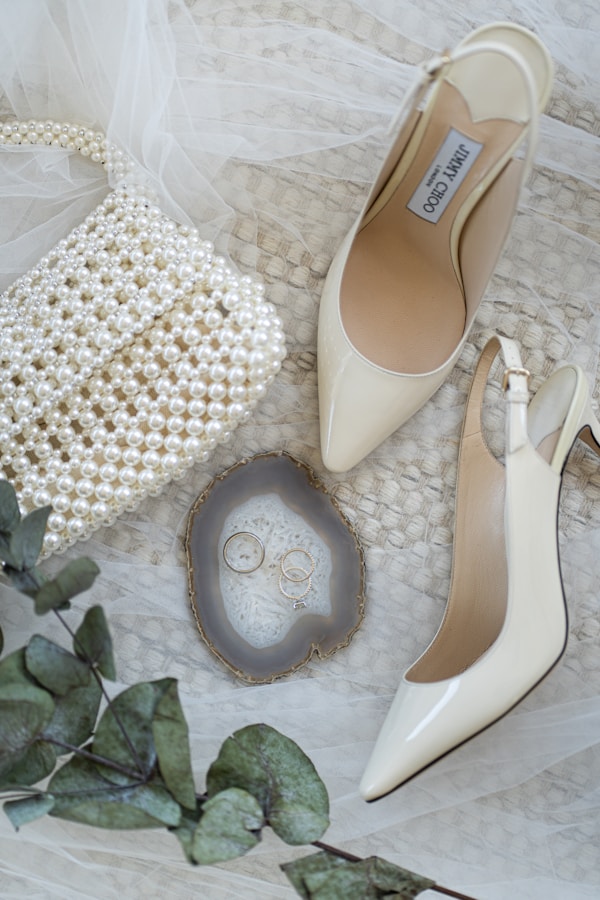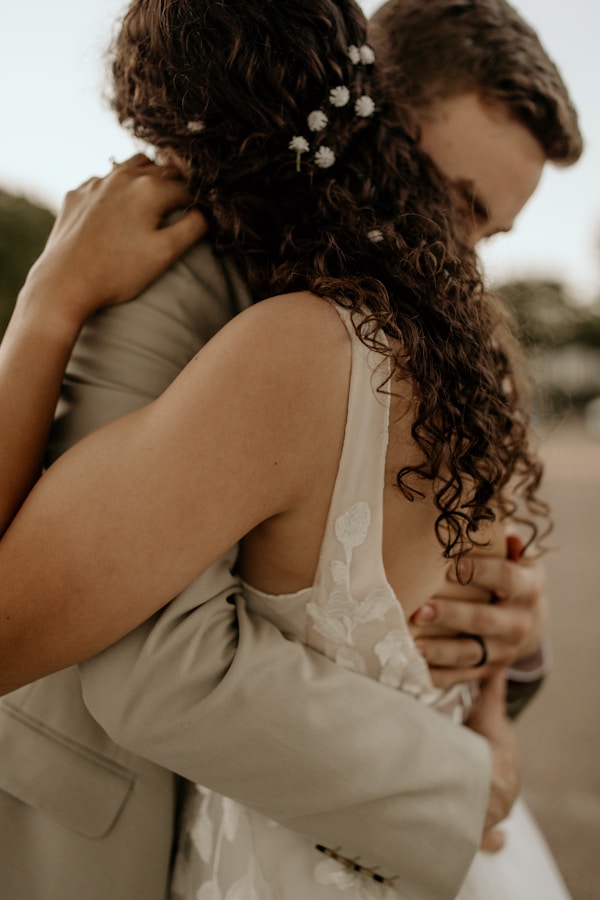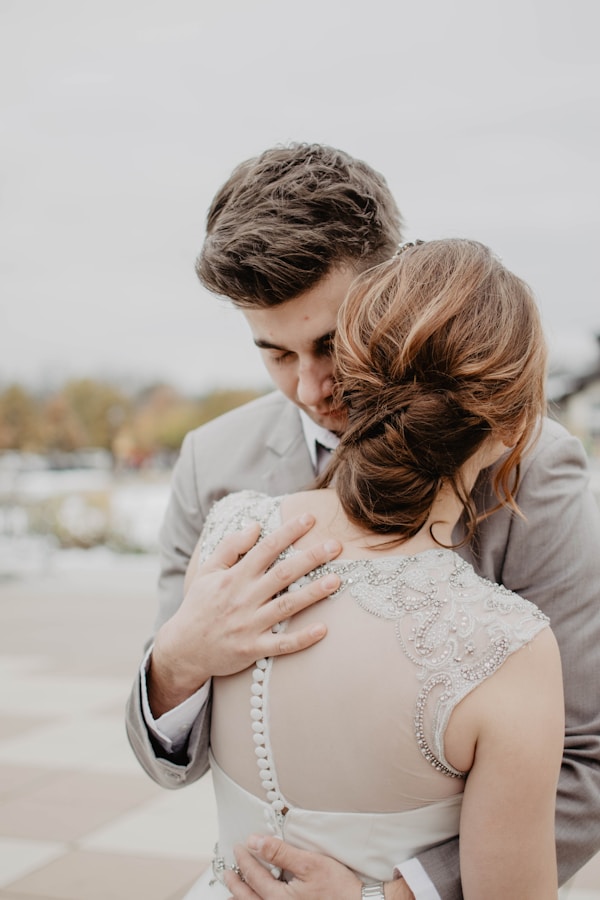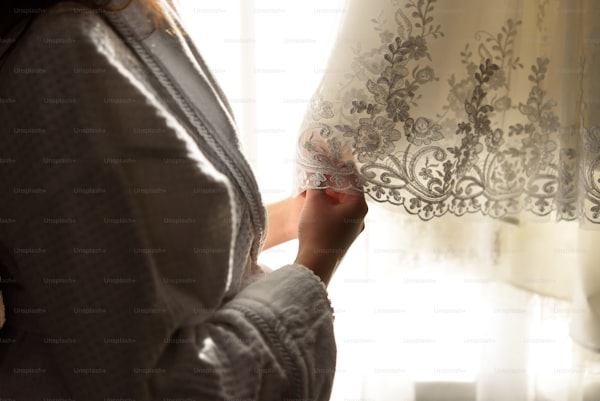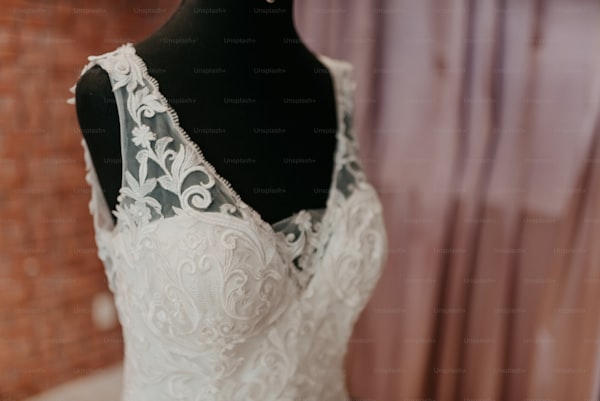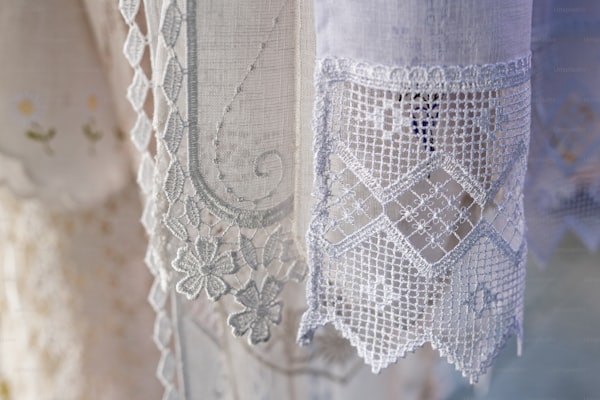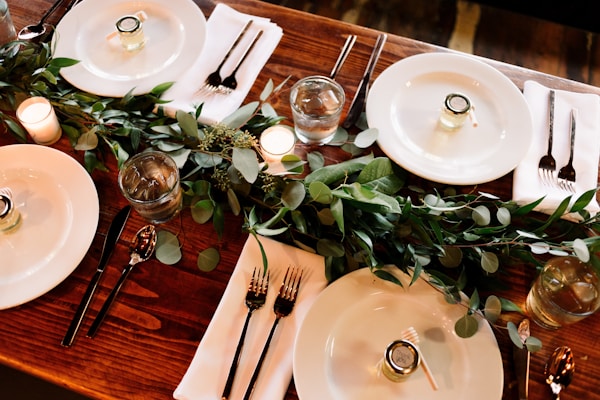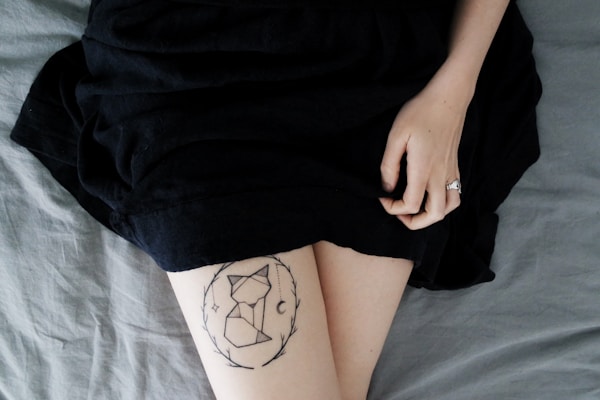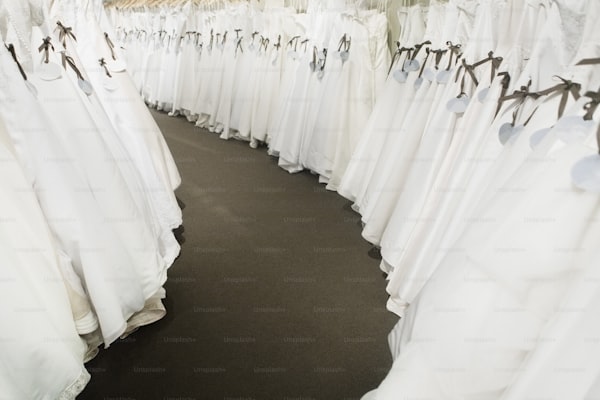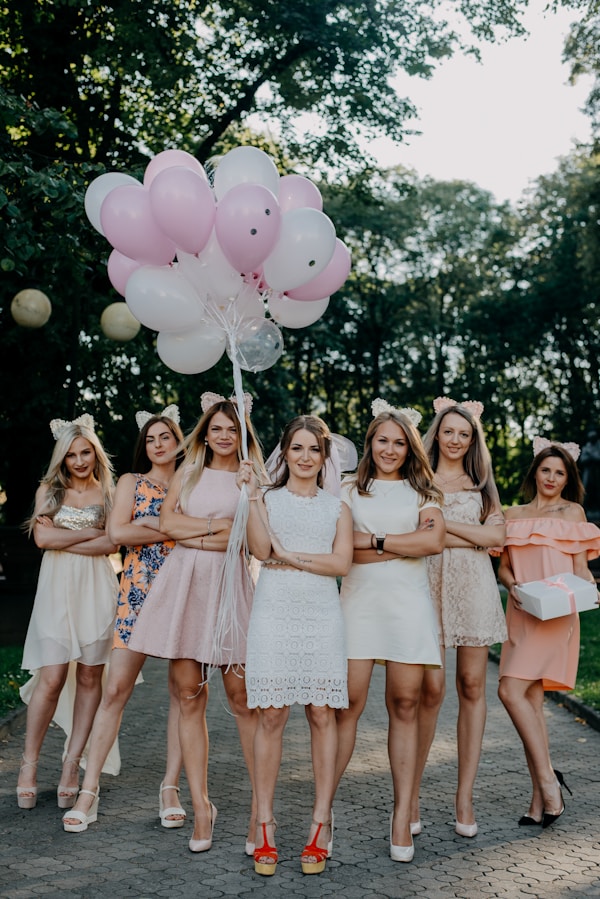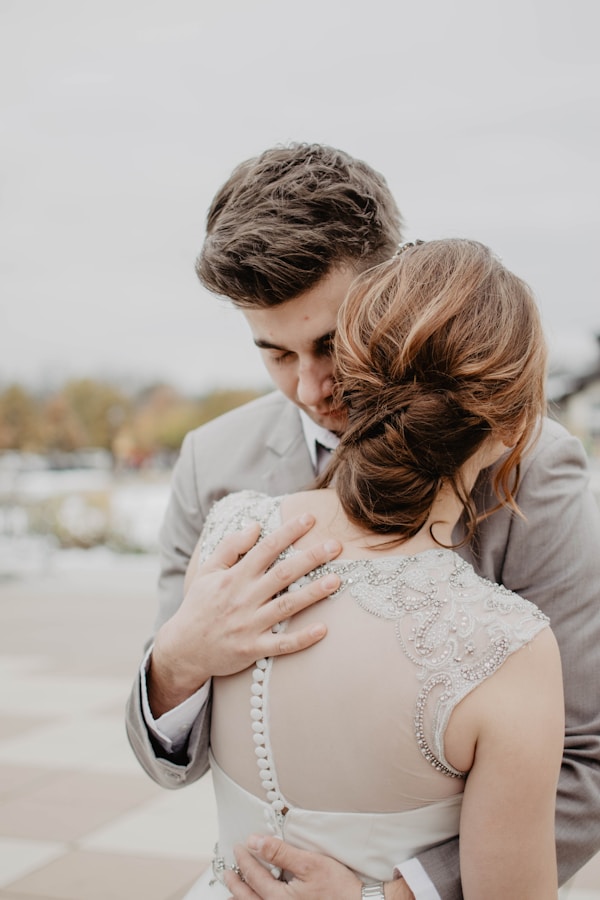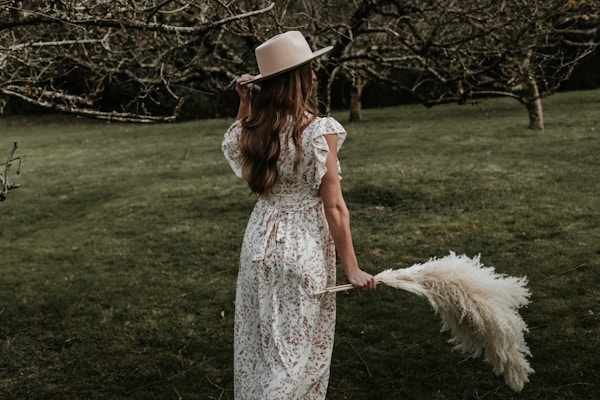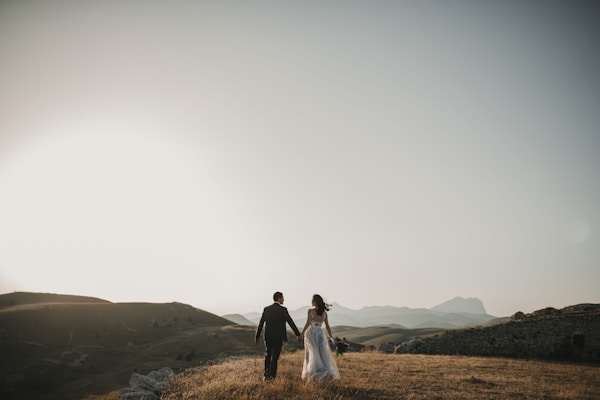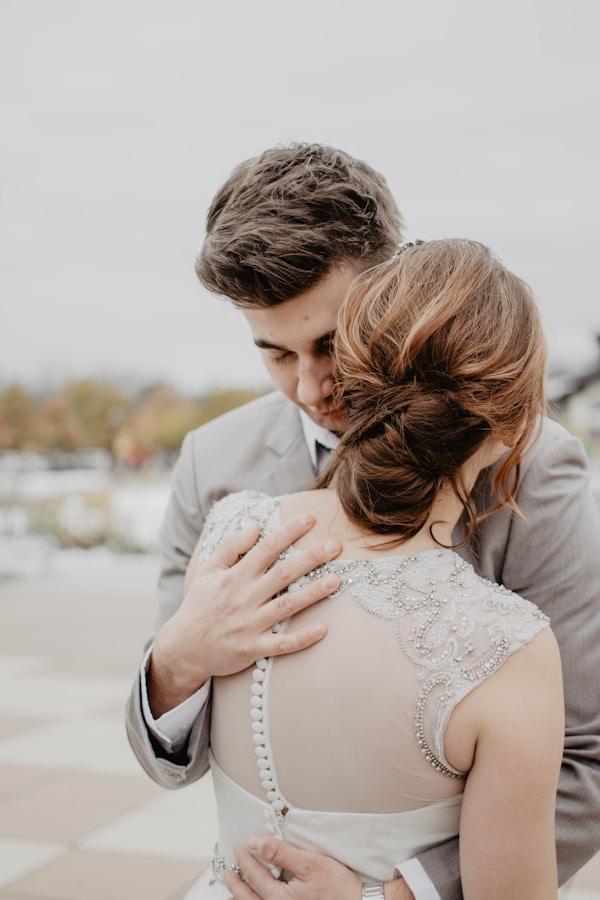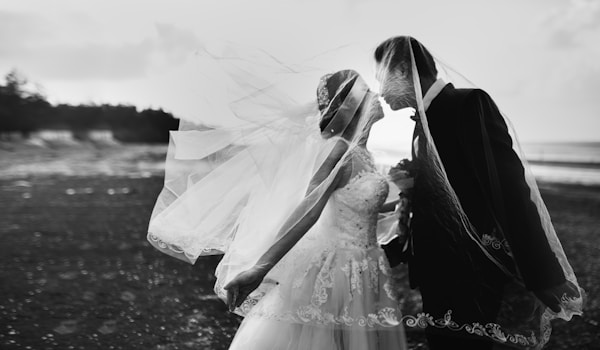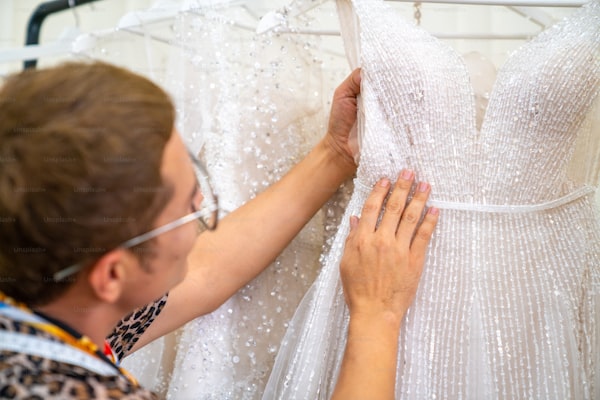Exploring the Different Types of Lace Used in Wedding Dresses
When it comes to selecting the perfect wedding dress, one of the most significant decisions a bride will make is choosing the type of lace that will adorn her gown. Lace has a rich history in bridal fashion, and with a variety of styles available, understanding the differences and characteristics of each type is essential for a stunning and memorable wedding look. In this article, we will explore the various types of lace used in wedding dresses, helping you make an informed decision for your special day.Understanding Lace in Wedding DressesLace is a delicate fabric that adds elegance and texture to wedding gowns. Originally, lace was a hand-made textile, crafted with intricate designs using threads of cotton, silk, or linen. Today, lace is often produced using machine methods, making it more accessible and diverse in style. The selection of lace can drastically alter the appearance of a wedding dress, from romantic to vintage to modern.The Key Types of Lace Used in Wedding DressesLet’s dive into the most popular types of lace that are often featured in wedding dresses:Lace TypeDescriptionCommon UsesChantilly LaceDelicate lace with a floral pattern, characterized by its fine netting and intricate designs.Often used in overlays, sleeves, and veils for a delicate touch.Alençon LaceA type of needle lace with a floral design, featuring a heavier outline and larger motifs.Commonly used for bodices and trims, adding a classic elegance.Venise LaceThicker lace with bold floral patter...
Unlocking the Secrets: How Can I Find a Wedding Dress with a Floral Print?
Embrace the Beauty of Floral Prints in Wedding DressesChoosing the perfect wedding dress is often one of the most exciting yet overwhelming tasks a bride will face during her wedding planning journey. Among the myriad options available, floral prints have emerged as a popular choice for modern brides seeking a whimsical and romantic look. So, how can I find a wedding dress with a floral print? This quest not only reflects your personal style but also sets the tone for your special day. In this article, we will explore everything you need to know about finding that dream floral wedding dress, including styles, where to shop, and tips for making your search easier.The Allure of Floral Wedding DressesFloral wedding dresses combine traditional elements of bridal wear with refreshing patterns, bringing a touch of nature's beauty to the forefront. Floral prints can range from delicate, small blooms to bold, statement-making patterns. Here are some reasons why floral prints are favored by many brides:Unique Styles: Floral prints offer a chance for brides to express their individuality. Unlike classic white or ivory dresses, floral prints come in a variety of designs and colors, allowing for personal expression.Seasonal Versatility: Floral dresses are perfect for outdoor and garden weddings, particularly in spring and summer when flowers are in bloom.Modern and Romantic: A floral wedding dress can seamlessly blend modernity with romance, making it suitable for both traditional and co...
Exploring the Best Fabrics for a Lightweight Wedding Dress
Choosing the Right Fabrics for Your Perfect Wedding DressPlanning a wedding can be an exhilarating yet daunting task, with countless details to consider, one of the most crucial being the wedding dress. When it comes to lightweight wedding dresses, fabric selection plays an essential role in ensuring comfort, style, and elegance. Whether you are planning a summer beach wedding or a chic outdoor ceremony, understanding the best fabrics for these dresses will help you make an informed decision.Why Fabric Choice Matters in Wedding DressesThe fabric of your wedding dress influences not just the overall aesthetic, but also how the dress feels on the big day. Choosing a lightweight fabric ensures that you stay comfortable, especially during warm weather or if your wedding involves a lot of movement. Lightweight fabrics allow for breathability, draping, and fluidity, making them perfect for any venue.Top Lightweight Fabrics for Wedding DressesHere we explore some of the best fabrics for creating a stunning lightweight wedding dress:FabricDescriptionFeaturesChiffonA sheer, lightweight fabric that flows beautifully.Breathable, drapes well, and adds elegance.LaceA delicate fabric often used for overlaying; can be lightweight.Romantic, intricate patterns, can be used in layers.TulleA thin, flexible netting often used in skirts and overlays.Light, airy, great for creating volume.CrepeA versatile fabric that has a subtle stretch and drapes nicely.Soft, flowy, excellent for form-fitting st...
What Are Some Tips for Selecting a Wedding Dress with Unique Embroidery?
Choosing a wedding dress is one of the most significant decisions a bride will make for her big day. The dress not only symbolizes love and commitment but also reflects individual style and personality. One of the most sought-after features in modern wedding dresses is unique embroidery. In this article, we will explore various tips for selecting a wedding dress with unique embroidery, ensuring you find a gown that captivates both your heart and your guests.Understanding the Appeal of Embroidery in Wedding DressesUniqueness and Personalization: Embroidery adds a personal touch to wedding dresses. With various designs, from floral patterns to intricate lacework, you can express your individuality. This customization allows brides to feel truly special on their big day.Quality and Texture: Embroidered dresses offer a luxurious texture that can elevate the overall look of the gown. High-quality embroidery can transform a simple design into a stunning focal point, allowing even a minimalist wedding dress to pop.Tips for Selecting Your Perfect Wedding Dress with Unique Embroidery1. Know Your StyleBefore you begin shopping, consider your personal style. Are you drawn to modern, vintage, or bohemian aesthetics? Understanding your preferences will guide you toward the right type of embroidery that complements your chosen theme.2. Research Embroidery TechniquesFamiliarize yourself with various embroidery techniques used in wedding dresses. Here are some popular ones: Technique ...
Exploring Beautiful Wedding Dress Options with a Lace-Up Back
Choosing the perfect wedding dress is one of the most exciting parts of planning your wedding. Among the various styles available, wedding dresses with a lace-up back have gained immense popularity for their elegant appearance and adjustable fit. In this article, we’ll explore different options for wedding dresses featuring lace-up backs, their benefits, styling tips, and how they can complement various wedding themes.Why Choose a Lace-Up Back Wedding Dress?A lace-up back provides not only a stunning visual appeal but also a practical solution for brides who may fluctuate in size leading up to their big day. Here are a few advantages of choosing a lace-up back wedding dress: Adjustability: Unlike traditional zippers, a lace-up back allows brides to adjust the tightness of the dress, ensuring a comfortable fit. Customizable Look: Lace-up backs add an element of detail and can be styled in various ways, creating a unique appearance that reflects your personal style. Timed Entry: If you have a larger bust or want to accommodate changes in body shape, lacing provides flexibility.Types of Wedding Dresses with Lace-Up BacksThere are many different styles of wedding dresses that feature lace-up backs. Here are some popular options:A-Line Wedding DressesA-line dresses are universally flattering and suitable for most body types. The lace-up back adds a touch of romance, while the flowing skirt creates an effortless elegance.Ball Gown Wedding DressesFor those dreaming of a fai...
What Are the Best Fabrics for a Bohemian Wedding Dress?
Planning a bohemian wedding can be an exciting yet overwhelming task. One of the most crucial decisions a bride will make is selecting the right wedding dress. Bohemian style is all about free-spirited elegance, natural beauty, and an effortless look. Choosing the right fabric is essential to create that perfect bohemian wedding dress that resonates with your individuality and unique style. In this article, we’ll explore the best fabrics for a bohemian wedding dress and help you understand how each fabric can contribute to your overall vision.Understanding Bohemian StyleBefore we dive into specific fabrics, it's important to understand what bohemian style embodies. This aesthetic is characterized by:Relaxed silhouettesEarthy colors and natural materialsDelicate lace detailsFloral motifs and flowing skirtsLayering elementsWith these characteristics in mind, let’s look at the best fabrics that can help you achieve a stunning bohemian wedding dress.Top Fabrics for Bohemian Wedding DressesFabricDescriptionWhy it’s Suitable for Bohemian StyleLaceA delicate, open weave fabric made from threads of cotton, silk, or synthetics.Offers a romantic touch; perfect for layering or as an overlay.ChiffonA lightweight, sheer fabric that flows beautifully and is typically made from silk or polyester.Creates soft, airy silhouettes ideal for bohemian styles.CrepeA fabric with a slightly crinkled texture, made from silk or synthetic fibers.Provides a flowing look that flatters various body types.G...
Discovering the Perfect Bustier Wedding Dress: Stylish Choices for Your Big Day
What Are Some Stylish Choices for a Wedding Dress with a Bustier Top?Choosing a wedding dress is one of the most exciting and challenging parts of planning your big day. The style of the dress sets the tone for the entire celebration, which is why many brides opt for a wedding dress with a bustier top. A bustier top not only provides support but also adds a touch of elegance and glamour. In this article, we will explore various stylish choices for wedding dresses with bustier tops, helping you find the perfect fit for your special day.Why Choose a Bustier Top Wedding Dress?Bustier tops have gained immense popularity in the bridal fashion scene for several reasons. First and foremost, they accentuate a bride's silhouette, creating an hourglass figure. The structured nature of a bustier offers excellent support, making it a comfortable choice for all-day wear. Additionally, bustier tops can come in various styles and designs, allowing brides to express their unique personalities.Here are some compelling reasons you might consider a bustier top wedding dress:Elegant Silhouette: Bustier tops help to create an elegant and streamlined silhouette.Variety of Styles: From vintage to modern, bustier tops can be styled to suit any wedding theme.Comfort: The tight-fitting nature provides support while allowing movement.Customizable: Bustier tops can often be altered to match personal preferences.Stylish Choices for Bustier Wedding DressesWhen it comes to choosing a bustier wedding dress,...
Elevate Your Special Day: What Are Some Options for a Wedding Dress with Three-Dimensional Florals?
Choosing the perfect wedding dress is one of the most exciting parts of wedding planning. As brides explore the vast array of options available, many discover the enchanting appeal of three-dimensional florals. These intricate designs add a unique flair and dimension, making bridal gowns not only beautiful but also symbolic of love and nature. In this article, we will delve deeper into the various options for wedding dresses with three-dimensional florals, addressing common questions and providing best practices for today’s brides.Understanding Three-Dimensional Florals in Bridal FashionThree-dimensional florals are not just a trend; they represent a gorgeous evolution in bridal fashion. They can transform a simple gown into a breathtaking piece of art, enhancing its elegance and romance. Three-dimensional embellishments can be created using various materials, including lace, fabric, and even beading, giving brides ample options to choose from!Why Choose Three-Dimensional Florals?The allure of three-dimensional florals lies in their ability to create texture and depth. They can be strategically placed to enhance specific features of the dress and highlight a bride's silhouette. Moreover, they offer a touch of nature, making a wedding gown feel more organic and connected to the earth. Additionally, three-dimensional florals serve as a stunning visual focal point, captivating the attention of guests as the bride walks down the aisle.Popular Styles of Wedding Dresses with Three-...
Discover the Best Wedding Dress Fabrics for a Fall Ceremony
What are the Best Wedding Dress Fabrics for a Fall Ceremony?Choosing the perfect wedding dress is one of the most significant tasks for any bride-to-be. As the fall season approaches, ladies often ponder what the best wedding dress fabrics are for a majestic autumn ceremony. Fall weddings are renowned for their vibrant colors and magical atmosphere, making the selection of an appropriate fabric vital for achieving that dream look. In this article, we dive deep into the best wedding dress fabrics for a fall celebration, along with tips on styles and considerations for a picturesque wedding day.Understanding the Essentials of Wedding Dress FabricsThe fabric you choose for your wedding dress can significantly influence not just your look but your comfort and functionality throughout the day. Specific materials do particularly well in showcasing autumn themes and textures. Here are some outstanding fabric options you should consider:1. SatinSatin is a classic choice among brides for its glossy finish and luxurious feel. This fabric drapes beautifully, making it perfect for structured gowns. Satin is generally heavier than other materials, which helps keep warm during cooler fall temperatures. Opt for a satin wedding dress if you desire a timeless yet elegant look.2. VelvetVelvet is making a significant comeback in the world of bridal fashion, especially for fall weddings. Its rich texture and luxurious sheen can elevate any gown's aesthetic. Velvet not only provides warmth but al...
How to Find a Wedding Dress with a Sophisticated Drape: Your Ultimate Guide
Choosing the perfect wedding dress can be one of the most exciting yet overwhelming experiences for a bride-to-be. Among the myriad of styles available, a dress with a sophisticated drape stands out for its elegance and understated charm. In this guide, we will explore effective methods to locate a wedding dress that embodies this quality, ensuring you look stunning on your big day.Understanding Sophisticated DrapeBefore diving into how to find the perfect dress, it is essential to understand what "sophisticated drape" means in the realm of wedding fashion. A sophisticated drape refers to the way fabric flows and falls on the body, creating a refined silhouette. This characteristic is often achieved through the use of luxurious materials like chiffon, silk, or satin, which lend themselves to graceful movement. When searching for a wedding dress, look for styles that emphasize natural lines and soft curves.Where to Begin Your SearchFinding a wedding dress with a sophisticated drape involves a combination of research, visits to bridal boutiques, and open-mindedness. Here are several steps to guide you:1. Establish Your BudgetSetting a budget is crucial. Wedding dresses can range significantly in price, with some boutique dresses costing thousands of dollars. Determine how much you are willing to spend, as this will help narrow down your selections. For instance, you may find options from around $500 to $5000, depending on the designer and materials.Price RangeDesigners to Consi...
Elegant Choices for a Wedding Dress with Sheer Panels
Choosing the Perfect Wedding Dress with Sheer PanelsWhen it comes to wedding attire, one of the most significant and cherished choices is the wedding dress. Among the trends that have gained immense popularity in recent years, sheer panels stand out as a particularly elegant option. In this article, we will explore what are some elegant choices for a wedding dress with sheer panels, the styles available, and tips on how to choose the right dress for your special day.Understanding Sheer PanelsSheer panels refer to sections of fabric that are transparent or semi-transparent, allowing for a unique play of light and shadow while showcasing the wearer's elegance. These panels can be made of various materials such as lace, tulle, or chiffon. Their strategic placement can highlight certain areas, add a touch of sensuality, or create a romantic silhouette. As a bride, selecting a gown that integrates sheer panels can create an enchanting look on your wedding day.Types of Wedding Dresses Featuring Sheer PanelsThere are several styles of wedding dresses that elegantly incorporate sheer panels. Here are some popular choices:StyleDescriptionA-Line GownsThese dresses flow from the waist to the hem, creating a flattering silhouette for various body types. Sheer panels can be included in the bodice or train for added allure.Mermaid DressesFitting snugly through the body and flaring out at the bottom, mermaid gowns often feature sheer panels on the neckline or back, enhancing the feminine fi...
How to Choose a Wedding Dress with a Vintage Lace Collar: A Timeless Guide
The Allure of Vintage Lace Collars in Wedding DressesYour wedding day is one of the most important milestones in your life. Selecting the perfect wedding dress is crucial, and a vintage lace collar can add a touch of sophistication and romance. In this guide, we will explore the enchanting world of vintage lace collars, how to choose the right wedding dress, and tips to ensure you look and feel stunning on your big day.Understanding Vintage Lace CollarsVintage lace collars have a unique charm that evokes a sense of nostalgia and elegance. They often come in various styles, from delicate and intricate designs to bold, eye-catching patterns. The choice of lace can greatly impact the overall look of your wedding dress. Here’s a brief overview:StyleDescriptionClassic VictorianRich, ornate lace with high collars; perfect for a traditional look.BohemianSoft, flowing lace for a relaxed, free-spirited vibe.Art DecoGeometric patterns and bold shapes for a vintage 1920s feel.How to Select the Right Wedding Dress with a Vintage Lace CollarChoosing a wedding dress with a vintage lace collar involves several steps. Follow these guidelines to find a dress that complements your style and fits perfectly on your special day.1. Know Your Body TypeUnderstanding your body type is the first step in selecting the ideal wedding dress. Consider the following body shapes:Body ShapeRecommended Dress StyleAthleticBall gowns or A-line dresses to add curves.HourglassFitted silhouettes that highlight your...
Discovering the Perfect Wedding Dress with Delicate Beading: A Comprehensive Guide
How Do I Find a Wedding Dress with Delicate Beading?Finding the perfect wedding dress can feel like a daunting task, especially when you have specific details in mind, such as delicate beading. This exquisite embellishment can elevate any gown, adding an element of sophistication and glamour. In this article, we will guide you through every step of selecting a wedding dress adorned with delicate beading, providing you with valuable tips and insider knowledge to streamline your search.Understanding Delicate Beading in Wedding DressesBefore diving into the search for your dream dress, it is important to understand what delicate beading entails. Beading can refer to any form of embellishment made from beads, sequins, or other decorative elements. Delicate beading, in particular, implies a subtle and intricate design that enhances the dress without overwhelming the overall look. This can range from tiny pearl accents to shimmering crystals that catch the light beautifully.Popular Styles Featuring Delicate BeadingWhen exploring wedding dresses, you’ll come across various styles that incorporate delicate beading: A-Line Gowns: This classic silhouette flatters all body types and can be beautifully enhanced with beaded detailing along the bodice or skirt. Mermaid Dresses: Fitted through the body and flaring at the knee, mermaid dresses often feature intricate beading to highlight curves. Ball Gowns: Often embellished with stunning beaded designs, ball gowns are perfect for b...
Discover the Best Fabrics for Your Dream Summer Wedding Dress
What Are the Best Fabrics for a Summer Wedding Dress? Planning a summer wedding can be a beautiful yet daunting task, with many decisions to make to ensure a perfect day. One of the most crucial choices is selecting the right fabric for your wedding dress. The fabric you choose can greatly affect the overall look, feel, and comfort of your dress, especially in the warm summer heat. In this article, we will explore the best fabrics for a summer wedding dress and provide you with essential tips and insights to help you make the right choice. Why Fabric Choice Matters for a Summer Wedding Dress The fabric of your wedding dress plays a significant role in determining its appearance and functionality. On a warm summer day, you will want a fabric that not only looks good but also feels comfortable against the skin. The right fabric can help regulate body temperature, allow for breathability, and provide ease of movement, making it easier for you to enjoy your special day. Top Fabrics to Consider for Your Summer Wedding Dress Choosing the perfect fabric can be overwhelming, given the array of options available. Below are some of the most recommended fabrics for summer wedding dresses: Fabric Characteristics Advantages Chiffon Lightweight, sheer, and flowing Ideal for a romantic look; adds soft movement Lace Delicate, intricate patterns Classic look; great for added texture Satin Smooth and luxurious Gorgeous drape; suitable for formal settings ...
Explore Elegant Wedding Dress Options with Transparent Lace Panels
Choosing the perfect wedding dress is one of the most significant aspects of planning your special day. Among the popular styles today, wedding dresses featuring transparent lace panels have become a favorite for brides seeking a blend of elegance and allure. In this article, we will explore various options for wedding dresses with transparent lace panels, offering inspiration and guidance to help you find the perfect gown for your big day. Understanding Transparent Lace Panels Transparent lace panels are delicate fabric sections that add a touch of sophistication and sensuality to wedding dresses. They are designed to offer a glimpse of skin while maintaining an overall graceful appearance. The use of lace creates a romantic vibe, making these dresses suitable for different wedding themes, from traditional to modern. Factors to Consider When Choosing a Wedding Dress When selecting the perfect wedding dress, consider the following factors to ensure you find a gown that complements your style: Body Shape: Choose a dress that flatters your body shape, whether you are pear-shaped, hourglass, or athletic. Wedding Theme: Consider the overall theme of your wedding. Transparent lace panels can suit both rustic and elegant settings. Season: Different lace fabrics and designs may work better for particular seasons, influenced by comfort and weather. Personal Style: Select a gown that reflects your individual taste, whether you prefer classic, bohemian, or contemporary desi...
Discovering the Best Fabrics for a Draped Wedding Dress
When it comes to selecting the perfect fabric for your draped wedding dress, the options can be overwhelming. Fabrics play a pivotal role in the overall aesthetic and comfort of the gown. In this article, we will explore the best fabrics for a draped wedding dress, why they are suitable, and highlight some considerations to keep in mind when making your choice. Understanding Draped Wedding Dresses Draped wedding dresses are known for their fluidity and elegance. They often feature soft, flowing silhouettes that contour the body beautifully. When selecting the best fabric, it is crucial to consider how each material drapes and moves, as this directly influences the dress's overall look and feel. Key Factors to Consider when Choosing Fabric Before we dive into the best fabric options, let's explore some essential factors that influence fabric choice: Weight: Heavier fabrics tend to offer more structure, while lighter options provide fluidity and softness. Texture: The texture can dramatically alter the appearance of a dress, from sleek satin to textured chiffon. Comfort: Consider how the fabric feels against your skin, especially for a long day at your wedding. Season: Choose fabrics that are appropriate for the season in which you are getting married; for instance, heavier fabrics are ideal for winter weddings. Top Fabrics for a Draped Wedding Dress Now, let's delve into some of the best fabrics available for draped wedding dresses: Fabric Description ...
Discover Stylish Options for a Wedding Dress with Velvet Accents
Elegance Redefined: Velvet Accents in Wedding DressesWeddings are one of the most cherished moments in a person's life, and choosing the right dress is paramount. Among the myriad of options available, wedding dresses adorned with velvet accents are increasingly becoming a popular trend. Velvet, a luxurious fabric, adds a distinctive flair and sophistication to bridal gowns, making them stand out on that special day. In this article, we will explore some stylish options for a wedding dress with velvet accents, aiming to help brides-to-be find their dream gown.The Allure of Velvet in Wedding DressesVelvet has a rich history in fashion, associated with royalty and opulence. The soft texture and depth of color that velvet provides can elevate a wedding dress, creating an aesthetic that is both modern and timeless. Here are a few reasons why velvet accents are an excellent choice: Luxurious Texture: Velvet adds a tactile richness that enhances the overall look. Versatile Style: Paired with various fabrics like lace or satin, velvet can blend seamlessly into various design styles. Seasonal Adaptability: Velvet is perfect for fall and winter weddings, providing warmth and elegance.Stylish Options for Velvet-Accented Wedding DressesNow that we understand the allure of velvet, let’s delve into some trendy options for wedding dresses featuring this luxurious material. Here are some breathtaking styles to consider: Style Description A-Line Gown...
Discover the Best Fabrics for a Wedding Dress with a Sheen
Understanding Sheen Fabrics for Wedding DressesChoosing the right fabric for a wedding dress is one of the most critical decisions any bride-to-be will face. Among the various options available, fabrics that exhibit a sheen can add a touch of elegance and sophistication to the overall look. In this article, we will explore the best fabrics for a wedding dress with a sheen, helping brides-to-be create their dream bridal attire.The Allure of Sheen in Bridal FashionSheen refers to the soft glow or luster of a fabric's surface, which can enhance the visual appeal of a wedding dress. Fabrics with a sheen can reflect light beautifully, creating a stunning look that captures attention—a perfect choice for the momentous occasion of a wedding. But what are the best fabrics that offer this desirable quality?Top Fabrics with Sheen for Wedding DressesFabric TypeDescriptionBenefitsSilk SatinSilk satin is a luxurious blend that provides a glossy finish and a soft touch.Highly breathable, lightweight, and naturally elegant.ChiffonChiffon is a lightweight, sheer fabric that gives a soft, flowing appearance.Offers a romantic look, perfect for layering and movement.LaceLace can be combined with other fabrics, adding texture and intricate design.Brings vintage charm and elegance to any wedding dress.TaffetaTaffeta is a crisp fabric that holds its shape well, often featuring a high sheen.Gives a structured look while being relatively lightweight.OrganzaOrganza is a sheer, thin fabric that provid...
How Do I Find a Wedding Dress with Floral Lace Details? The Ultimate Guide for Brides
Finding the perfect wedding dress is a journey like no other, filled with excitement and often a little apprehension. Among the myriad of styles available today, dresses featuring floral lace details are increasingly becoming a quintessential choice for brides. Whether you’re drawn to romantic, vintage, or modern interpretations of lace, discovering a gown that embodies your vision can be both thrilling and daunting. In this extensive guide, we'll unveil the secrets to identifying and choosing the ideal wedding dress adorned with floral lace details.Understanding Floral Lace DetailsFloral lace offers a delicate, feminine touch to wedding attire and can be combined with various fabrics and cuts to create stunning silhouettes. It is essential to comprehend what floral lace entails before diving into the selection process.Types of Floral Lace:Chantilly Lace: This lightweight lace is known for its intricate floral motifs and delicate feel, perfect for elegant and romantic dresses.Alençon Lace: Originating from France, this type of lace features a corded edge and floral designs, adding texture and depth to your gown.Venise Lace: Available in larger floral patterns, Venise lace is usually embroidered onto a tulle background, creating a striking effect.Bridal Lace: Specifically designed for wedding gowns, this lace often combines various floral patterns, providing a timeless elegance.Where to Start Your SearchEmbarking on your journey to find the perfect wedding dress can feel overw...
What are the Best Fabrics for a Wedding Dress with Ruching?
Choosing the perfect fabric for a wedding dress is crucial in ensuring that the dress not only looks stunning but also feels comfortable on one of the most important days of your life. Among the many contemporary trends, ruching has become a popular feature for adding texture and dimension to wedding gowns. This article delves into the best fabrics for a wedding dress with ruching, exploring various options to help brides-to-be make informed choices.Understanding RuchingRuching is a technique that gathers fabric in folds to create a flowing and elegant effect. It adds visual interest and can enhance the dress's silhouette, making it particularly popular for wedding dresses. However, not all fabrics respond well to ruching. Choosing the right material is essential to achieve the desired aesthetic.Ideal Fabrics for Wedding Dresses with RuchingBelow are some of the best fabrics for creating beautiful wedding dresses with ruching:Fabric TypeCharacteristicsBest UsesSatinSmooth, glossy finish; drapes beautifullyFormal gowns; evening weddingsTaffetaCrisp texture; holds shape wellBall gowns; structured designsChiffonLightweight, airy; layers wellBeach weddings; flowing silhouettesSilkLuxurious feel; beautiful drapeClassic and timeless stylesOrganzaSheer, crisp; adds volume to skirtsLayered looks; adding dimension1. SatinSatin is a popular choice for wedding gowns due to its smooth, glossy finish. The fabric drapes beautifully, making it ideal for creating elegant ruching. Satin weddi...
